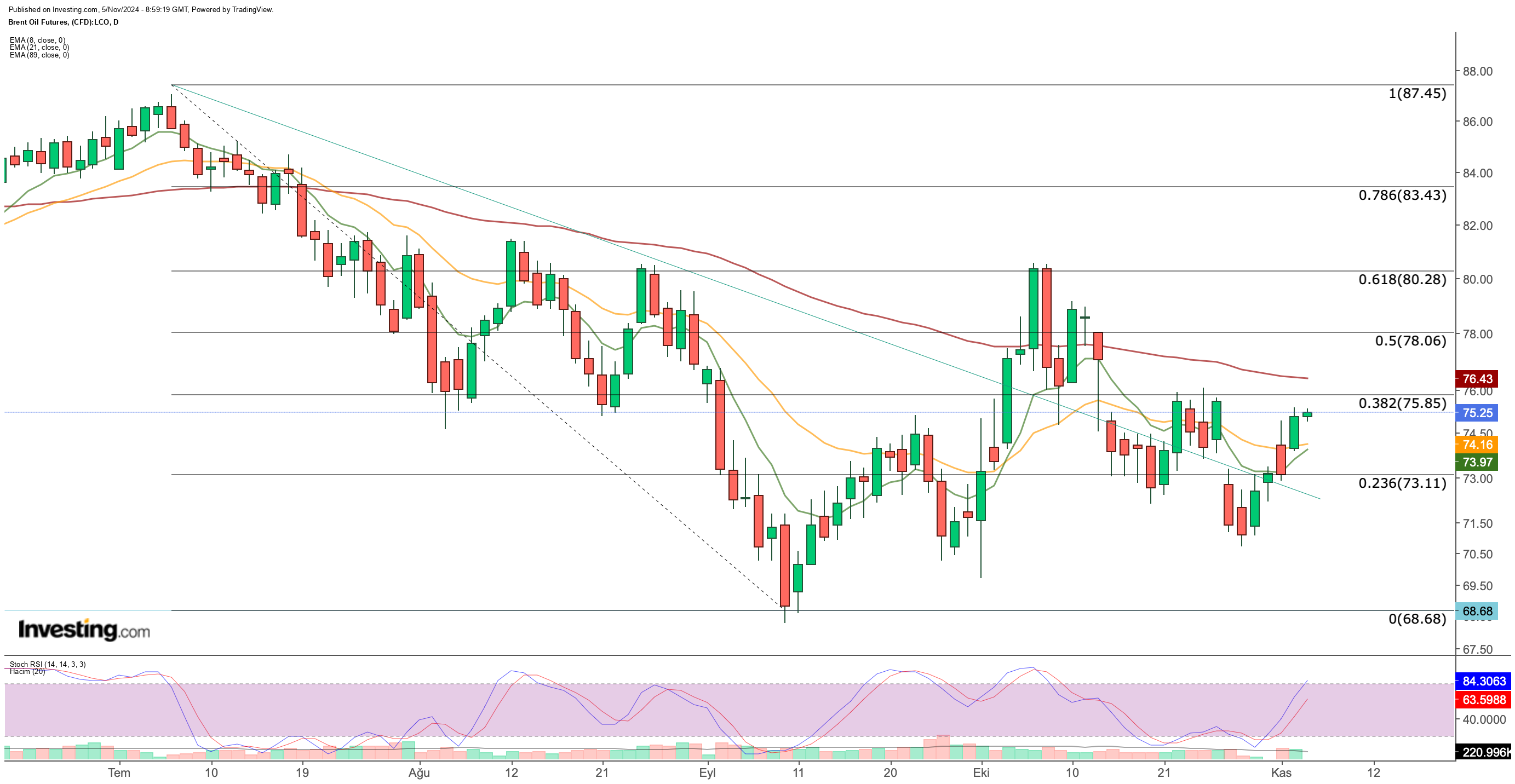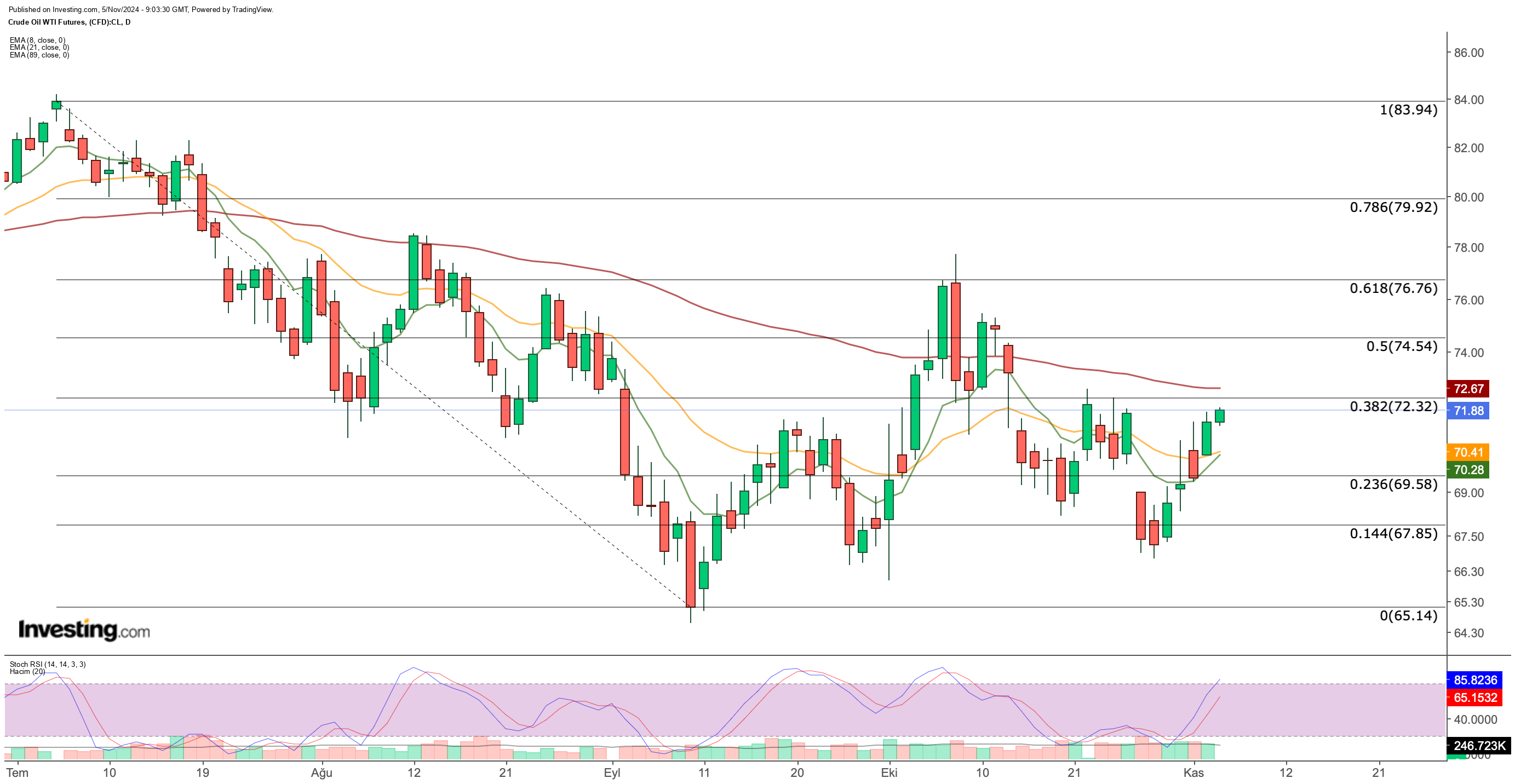- OPEC+ and geopolitical moves could trigger major shifts for crude traders.
- WTI and Brent key levels set up entry points amid volatile conditions.
- U.S. elections and China’s policies add layers of uncertainty.
- Looking for actionable trade ideas to navigate the current market volatility? Unlock access to InvestingPro’s AI-selected stock winners for under $9 a month!
Crude oil is at a crossroads, with traders watching key moves from major producers and upcoming global events that could spark new price shifts.
As the market balances on supply-demand dynamics, driven by decisions from the OPEC+ alliance and heightened geopolitical factors, traders are eyeing crucial price levels and developments that could shape the trajectory of crude.
Recently, a mix of easing geopolitical tensions and a weakening hurricane impact in the U.S. provided some relief to crude prices.
However, with the market’s focus shifting to a delicate supply-demand balance, OPEC+’s decision to delay its planned production increase is now in the spotlight.
The alliance, responding to lackluster demand and pressure from non-OPEC suppliers, opted to hold off on a December production boost, leading WTI and Brent crude prices to surge over 3%.
This pause offers temporary relief, nudging WTI to $72 and Brent to $75, as both benchmarks gain footing and attempt to sustain their recent recovery.
Adding to the complex landscape, increased production from countries like Libya and Iran continues to impact supply.
Iran’s move to add 250,000 barrels daily signals further expansion, with Vice President Mohammad Reza Aref underscoring this increase’s role in stabilizing the nation’s economy and taming inflation.
However, while this influx could create a short-term surplus, OPEC+’s restraint aims to maintain balance through year-end, albeit amid demand-side headwinds.
U.S. Elections: A Key Factor for Oil’s Short-Term Outlook
The looming U.S. presidential election has injected an extra layer of uncertainty.
With polls indicating a close race, delays in results or contested outcomes could curb investors' risk appetite, especially in a market as large as the U.S. Post-election policies stand to impact oil demand, keeping crude prices in a narrow trading range as traders await clearer policy signals.
China’s Economic Moves and the Long-Term Impact on Oil
As the world’s largest oil importer, China’s economic policies hold sway over oil demand. New fiscal measures, including a stimulus package rumored to exceed 10 trillion yuan, aim to combat domestic slowdown.
Although these steps may not immediately influence oil prices, China's policies could elevate global demand in the medium to long term, especially if they spark an increase in imports.
Key Technical Levels to Watch in Brent and WTI Crude
Technical levels have become focal points for traders navigating recent volatility. For Brent, resistance at $80 led to a pullback to the $70 range.
The support found at $70 last week has sparked a short-term recovery, with $75.85 as a key resistance level to watch.
Weekly closes above this level could open the door for a retest of $80, potentially signaling a broader economic recovery. A breakdown below $75, however, would put the $73 and even sub-$70 levels back in play.

For WTI, traders monitor $72.3 as the nearest resistance, with upside targets at $74.5 and $76.8. On the downside, key support zones are at $69.6, $67.85, and $65.15, setting the stage for possible trend reversals amid geopolitical fluctuations.

In summary, the crude oil market is caught in a delicate dance between OPEC+ supply controls, Iranian production, and looming macroeconomic forces like the U.S. elections and China's fiscal maneuvers.
***
Disclaimer: This article is written for informational purposes only. It is not intended to encourage the purchase of assets in any way, nor does it constitute a solicitation, offer, recommendation or suggestion to invest. I would like to remind you that all assets are evaluated from multiple perspectives and are highly risky, so any investment decision and the associated risk belongs to the investor. We also do not provide any investment advisory services.
